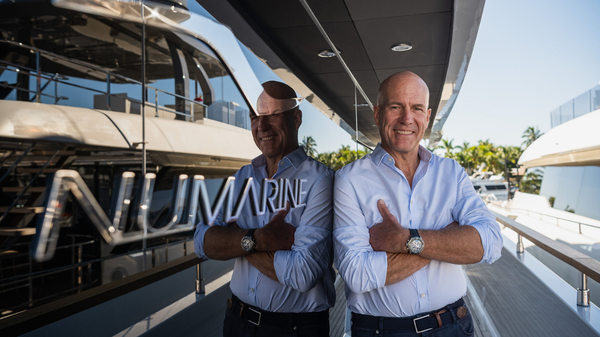Pre-Qualification and Pre-Approval: Cornerstones of Yacht Financing

For the discerning individual, the dream of commanding a vessel on the open water is a powerful one. Yet, before you are swept away by the allure of a specific yacht or sport fisher, a critical first step is essential: a clear understanding of your financial position. In the world of marine financing, the distinction between pre-qualification and pre-approval is not merely a matter of paperwork; it is the very difference between a graceful passage and being adrift at sea.
The quest for a new vessel often begins with an indulgent scroll through online listings or a leisurely stroll along the docks. However, the most paramount action an aspiring owner can take isn't measuring the beam: it is discerning their true borrowing power. To confuse the initial, preliminary step of pre-qualification with the robust and definitive process of pre-approval can lead to a profound disappointment, particularly in a market where coveted models are swiftly claimed.
Pre-Qualification
Consider pre-qualification a sophisticated, preliminary inquiry. It offers a general, high-level glimpse into your financial standing, akin to an initial reading of the waters.
This process is elegant in its simplicity: you provide a lender or a distinguished loan broker with an overview of your finances. This includes an estimation of your annual income, a summary of your monthly debts, assets, and a projection of your credit score. This can be accomplished with effortless speed, often in a matter of minutes, either online or over the phone.
The result is a provisional estimate of the boat loan amount you might be eligible for. While you may receive a pre-qualification letter, it is a courtesy, founded exclusively upon the information you have provided and yet to be verified. As David Marlow, a veteran marine loan specialist, eloquently states, “A pre-qualification is a great starting point for someone who's just beginning to dream. It helps answer the basic question: 'Is a $50,000 loan or a $500,000 loan within the realm of possibility?' But it carries no weight in a negotiation. It's a conversation, not a commitment.”
This initial step is best suited for those in the very early, conceptual stages of planning, allowing them to establish a realistic budget for their pursuit.
Pre-Approval
If pre-qualification is a depth sounding, then pre-approval is the comprehensive marine survey of your financial world. It is a formal, rigorous process in which your documentation is meticulously verified, culminating in a conditional commitment from the lender for a precise amount of capital.
To secure pre-approval, you will complete a formal loan application and consent to a comprehensive credit check. The lender will carefully verify your:
- Income and Employment: Through recent pay stubs, W-2s, and tax returns. For entrepreneurs, this may extend to two years of tax returns.
- Assets and Down Payment: Account statements from your bank, investments, and retirement portfolios to confirm the availability of funds for your down payment (typically 10-20% for a vessel) and closing costs.
- Credit History: A formal inquiry into your credit report to assess your credit score and your debt-to-income (DTI) ratio.
The final approval, of course, remains contingent upon the specific vessel passing a marine survey and valuation. However, a pre-approval solidifies your financial eligibility, providing an assurance that is highly valued.
The outcome is a formal pre-approval letter, which is a powerful instrument. It not only specifies the exact loan amount but often outlines the terms and interest rate you are conditionally approved for. As Jessica Sterling, a yacht broker with over two decades of experience, confirms, “In today's market, a buyer with a pre-approval letter in hand is immediately taken seriously. When I present an offer to a seller, and it's accompanied by a solid pre-approval from a recognized marine lender, it dramatically increases the offer's strength. It tells the seller that the financing is very likely to go through, which reduces the risk of the deal falling apart weeks into escrow. It can even give you an edge over a slightly higher offer from a buyer whose financing is uncertain.”
The Critical Distinction: Navigating the Paperwork
At its core, the difference between these two processes lies in the depth of verification and the credibility it conveys.
| Feature | Pre-Qualification | Pre-Approval |
| Basis of Decision | Self-reported information | Verified documentation (income, assets, credit) |
| Credit Check | Soft inquiry (no impact on score) | Hard inquiry (minor, temporary impact on score) |
| Level of Assurance | Low. An informal estimate. | High. A conditional commitment. |
| Strength in an Offer | Weak. Not considered a serious offer. | Strong. Essential for being competitive. |
| Typical Duration | Minutes to hours | Several days to a week |
The Final Compass Point for Aspiring Captains
Before you embark on a serious search, your first port of call should be a reputable marine lender or a credit union with a specialized marine lending division.
Start with a pre-qualification to gain a sense of your financial horizon, but move expeditiously to a full pre-approval before extending any offers. Assemble your financial documentation (tax returns, pay stubs, and bank statements) and ensure your financial "vessel" is fully prepared for its journey. If you're new to buying a yacht, consider reading similar pieces such as How Much Does a Yacht Cost and Yacht Management in 2025.
In the exhilarating pursuit of yacht ownership, a pre-approval is more than a mere step in the process; it is your navigational chart, guiding you to a successful and secure purchase. It ensures that when you discover the perfect vessel, you are ready to cast off with confidence, knowing your financing is already secured.






